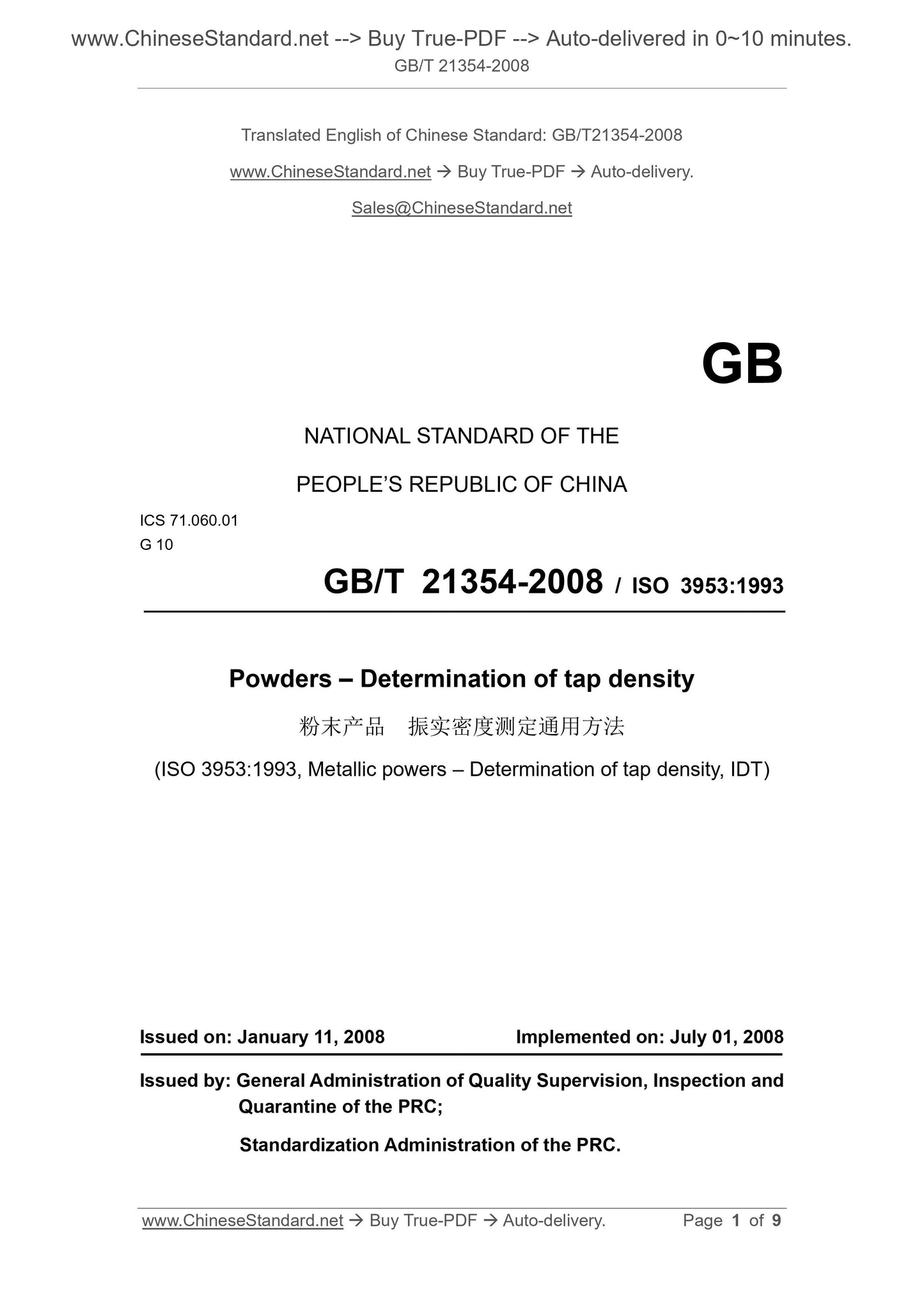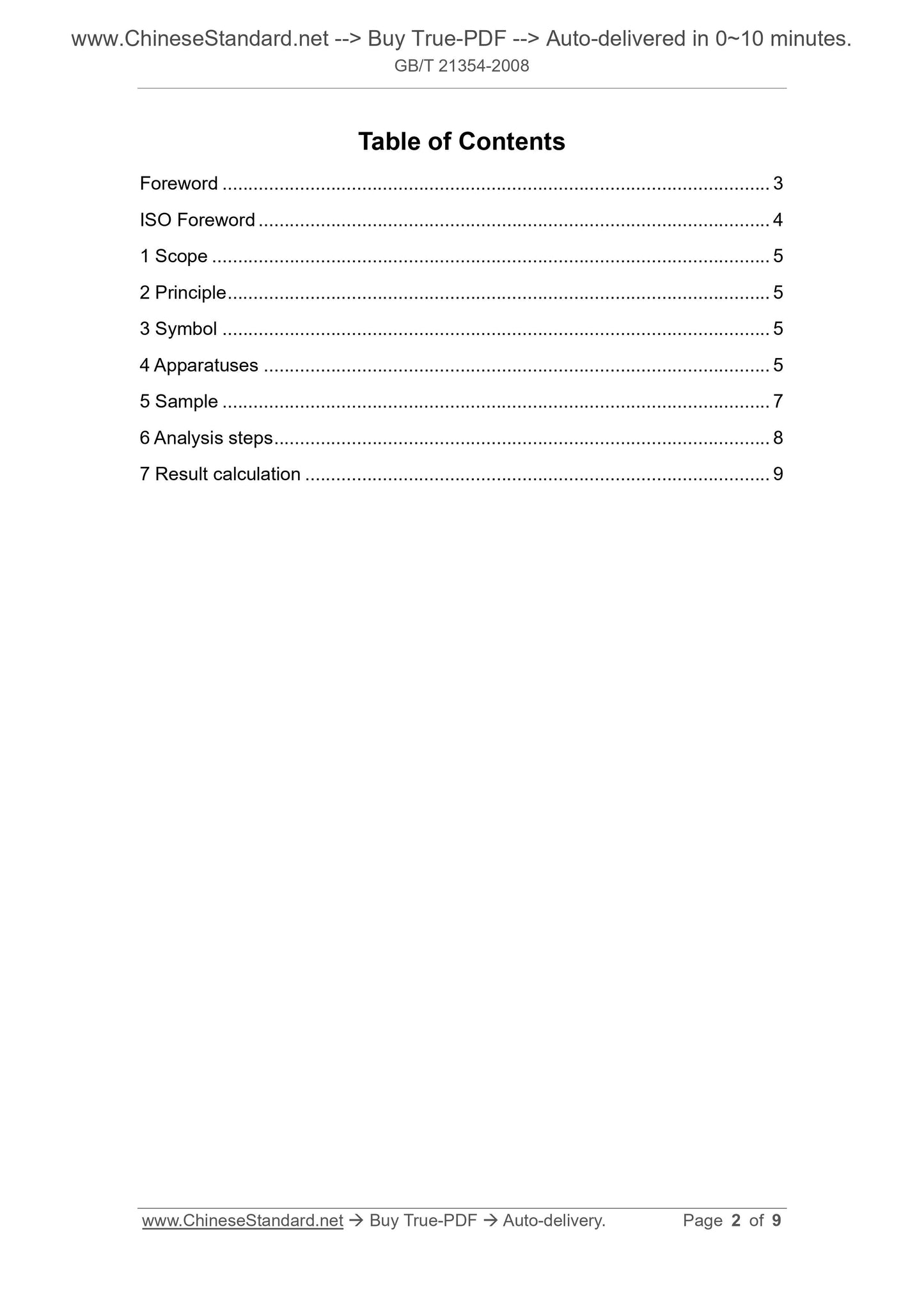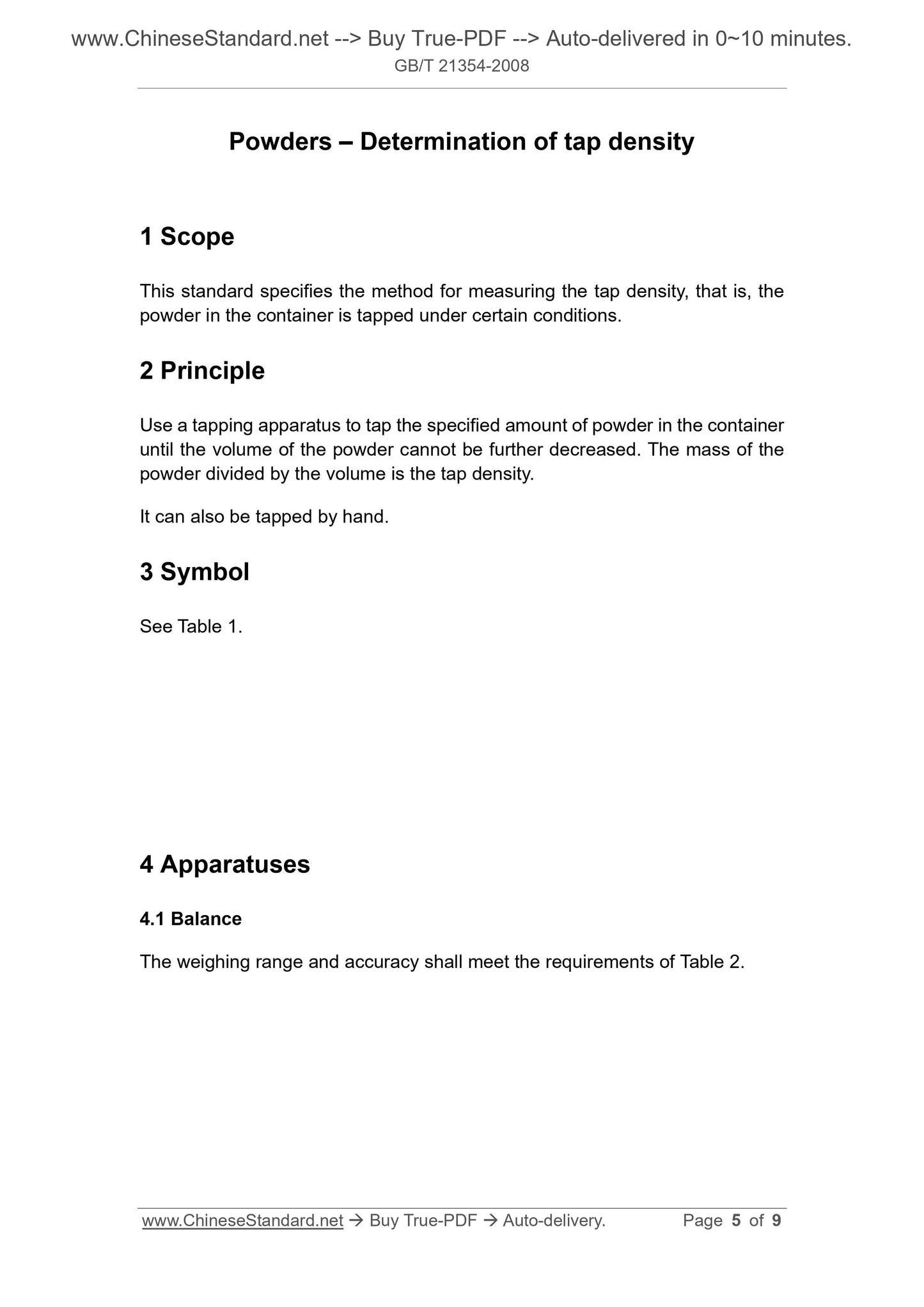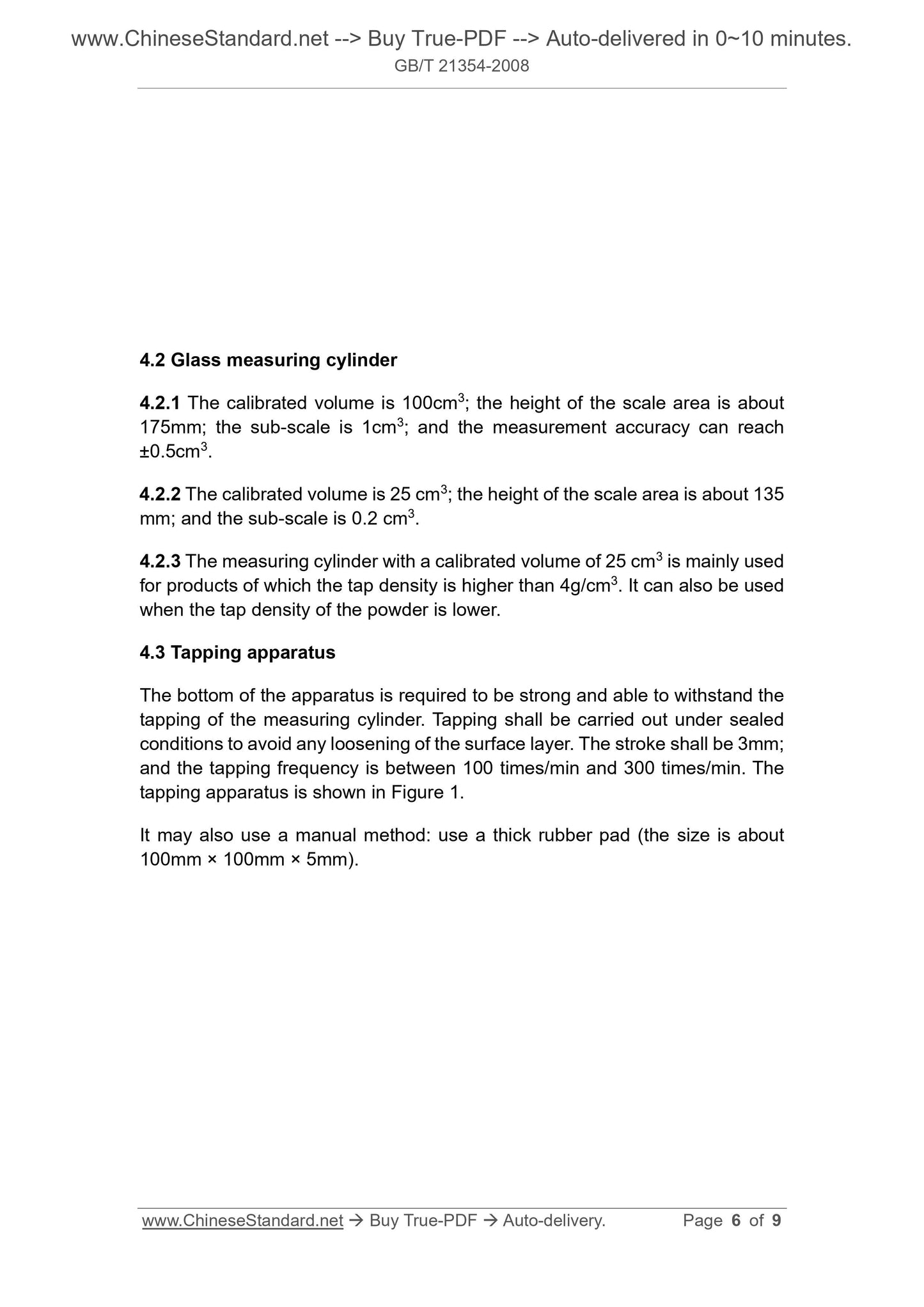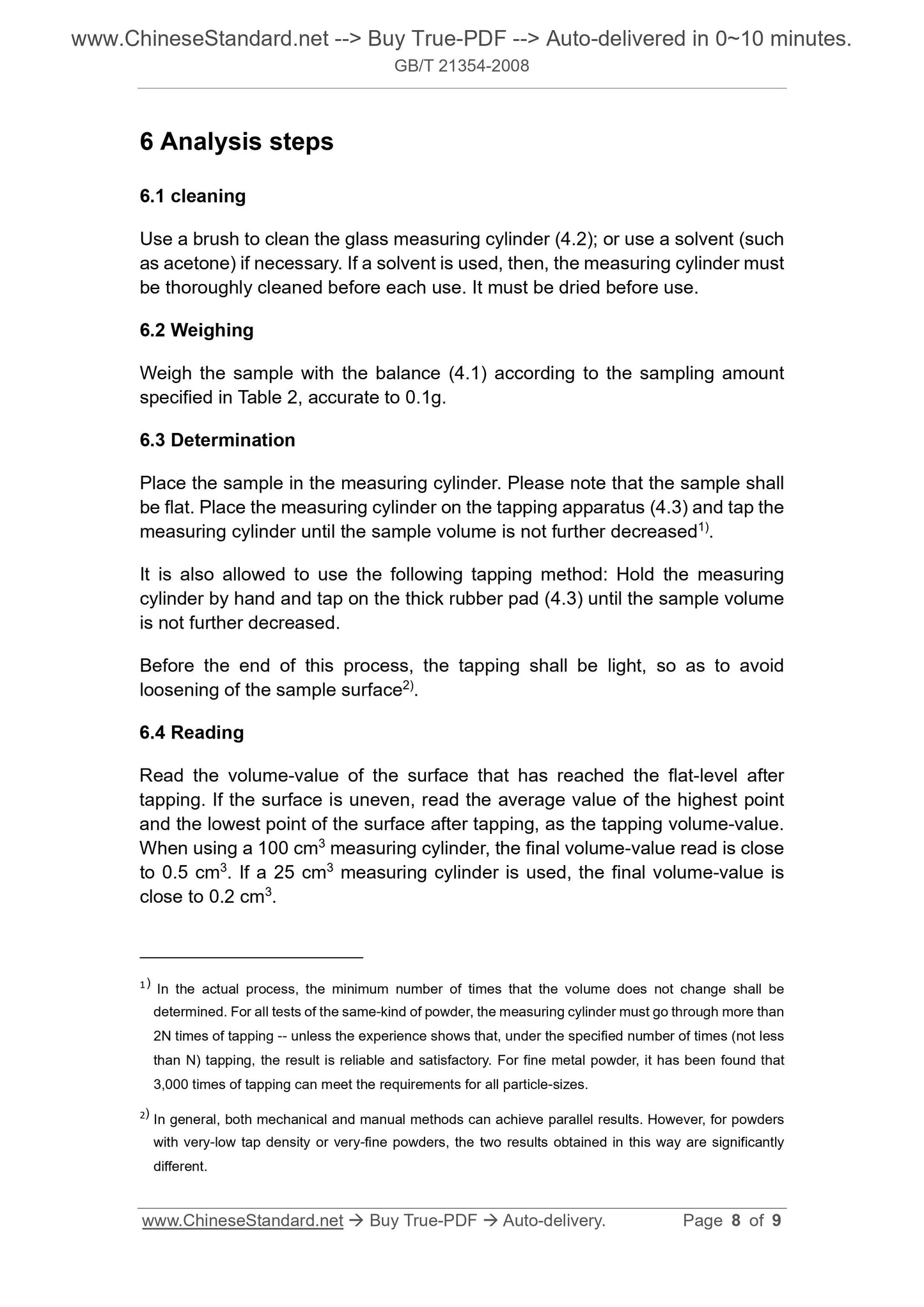1
/
of
5
www.ChineseStandard.us -- Field Test Asia Pte. Ltd.
GB/T 21354-2008 English PDF (GB/T21354-2008)
GB/T 21354-2008 English PDF (GB/T21354-2008)
Regular price
$70.00
Regular price
Sale price
$70.00
Unit price
/
per
Shipping calculated at checkout.
Couldn't load pickup availability
GB/T 21354-2008: Powders -- Determination of tap density
Delivery: 9 seconds. Download (and Email) true-PDF + Invoice.Get Quotation: Click GB/T 21354-2008 (Self-service in 1-minute)
Newer / historical versions: GB/T 21354-2008
Preview True-PDF
Scope
This standard specifies the method for measuring the tap density, that is, the powder in the container is tapped under certain conditions.Basic Data
| Standard ID | GB/T 21354-2008 (GB/T21354-2008) |
| Description (Translated English) | Powders -- Determination of tap density |
| Sector / Industry | National Standard (Recommended) |
| Classification of Chinese Standard | G10 |
| Classification of International Standard | 71.060.01 |
| Word Count Estimation | 7,761 |
| Date of Issue | 2008-01-11 |
| Date of Implementation | 2008-07-01 |
| Adopted Standard | ISO 3953-1993, IDT |
| Regulation (derived from) | China National Standard Approval Announcement2008 No.1 (Total No.114) |
| Issuing agency(ies) | General Administration of Quality Supervision, Inspection and Quarantine of the People's Republic of China, Standardization Administration of the People's Republic of China |
| Summary | This standard specifies the determination of tap density. Under certain conditions, i. e., the powder container tap. |
Share
